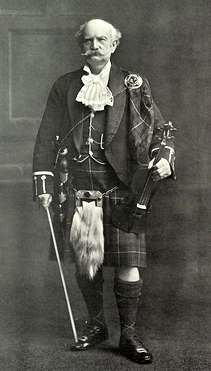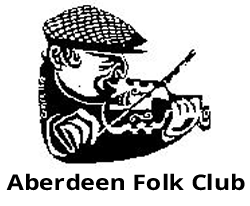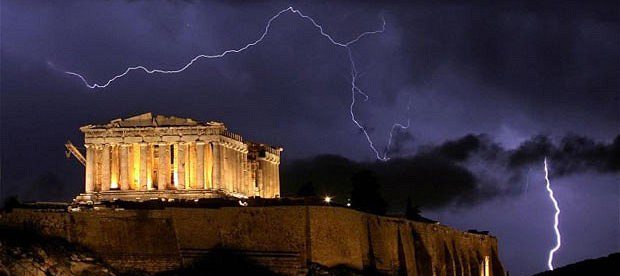Music in Aberdeen

Alexander Forbes Skinner (1833–1883) Alexander (Sandy) taught his young brother James to play Tunes on the Violin, and to ‘Vamp’, or play a Bassline on the Cello. By the time he was 8, James was playing the Cello at Dances with local Fiddler Peter Milne (1824–1908), who came from Kincardine o’ Neill, Aberdeenshire. As there were no Village Halls, Dances were usually held in Barns. Young James often had to trudge many miles to play at these Dances. For this, Peter Milne paid him 5/- (25p) a month. In 1855, ‘Dr Mark’s Little Men’, a Boys’ Touring Group visited Aberdeen. Sandy arranged for James to Audition with them. James, by now aged 11, signed up for a 6-yr Apprenticeship (on Cello & Violin). The Boys, who were based in Manchester, Performed throughout Britain. In return, Dr Mark Fed, Clothed & Educated them. In 1862 he took part in Highland dancing competitions in Ireland. He won 1st prize in a Sword Dance competition, accompanying himself on the Fiddle, and beating John McNeill, an acknowledged Champion. The following year he won a Violin competition in Inverness. That same year, he became a Professional Dancing-Master. He held his 1st Classes at Strathdon, Aberdeenshire. His growing reputation eventually led to work at Balmoral Castle, Queen Victoria’s Scottish retreat, where he taught Dancing to more than 100 Tenants & children.
James Scott Skinner
Skinner was born in Arbeadie Village, in the Parish of Banchory-Ternan, Aberdeenshire, on the 5th August 1843.
His father William Skinner, a Dance Teacher, had been a Gardener until a Shotgun (Fired as part of Wedding Celebrations) took off 3-Fingers of his left hand. After his accident, he learned to play his Fiddle by holding the Bow (instead of the Fiddle), with his damaged left hand.
James’s mother Mary Agnew came from Strathdon, Aberdeenshire. James was the youngest of 6 children. William Skinner died in 1845. Seven years later, Mary Skinner remarried, so James moved to Aberdeen, where he lived with his sister Annie and attended Free Church North, (D M Connell’s) School, Princes Street.
He married his 1st wife, Jean Stewart, from Aberlour, Moray, in 1871, the year that their daughter Jeanie was born. A son, Manson, arrived in 1881. The Family moved to Elgin, and expanded their Dancing Schools, spending weeks at a time in different Towns. Their Business soon covered most of the North of Scotland, including Forres, Nairn, Inverness, Dingwall, Invergordon, Tain & Wick, all accessible by Rail. By the 1870s, Skinner was giving Concerts all over the North-east of Scotland. The programmes normally included some of his own Compositions as well as Virtuoso Violin Solos by such Composers as Paganini, or his old French Violinist & Teacher, Charles Rougier in Manchester. Skinner made his 1st recording in Glasgow, in 1899. He was one of the very 1st Scottish Artists to be Recorded. By 1905, he had embarked on a Recording Career, which lasted until 1922. In this way, his Music spread worldwide. During this time, he continued to perform in Concerts throughout Scotland. In 1911, at Sir Harry Lauder’s suggestion, he formed ‘The Caledonian Four’ who performed in that year at the opening of the London Palladium. In 1922 he bought his 1st (and only) House at 25 Victoria Street, Aberdeen, where he lived with his Housekeeper, Mrs Lily Richards. Four years later, he was invited to take part in a Fiddle Competition in the United States. He went, but unhappy with the Competition Rules, refused to take part. He returned to Aberdeen, where he died the following year, on 17th March 1927. His many friends & admirers raised a subscription for a Marble Memorial at his grave in Allenvale Cemetery, Aberdeen. This was unveiled in 1931 by Sir Harry Lauder, an old friend. The Memorial includes a Bronze bust of Skinner, a Violin, and some bars from one of his most famous Compositions, ‘The Bonnie Lass o’ Bon Accord’.
Aberdeen City Music School (ACMS) is a national specialist centre of excellence of the highest quality serving the whole of Scotland. ACMS caters for young people with well above average Musical ability and offers a specialist music curriculum within the comprehensive secondary setting of Dyce Academy. This exciting Music School has been made possible as a result of funding from the Scottish Government.
Aberdeen City Music School
Dyce Academy
Riverview Drive
Dyce
Aberdeen
AB21 7LF – Tel: 01224 774773
Dorothy Hately Music Centre, 21 Huntly Street, Aberdeen AB10 1TJ, Scotland, UK

Folk –
Aberdeen Folk Club – Meet every Wednesday at 8.30pm at the Blue Lamp, 121 Gallowgate, Aberdeen AB25 1BU.
Bob Knight
Guitarist & Composer – Bob Knight is a folk/traditional singer based in Aberdeen, Scotland. As well as traditional songs, he also writes new songs in the traditional Scottish style, using Scots and Doric. For his own songs he accompanies himself on guitar, but traditional material, for the most part, is often sung unaccompanied. He is also an excellent storyteller and gives talks on songwriting.

Jazz
Aberdeen Jazz Orchestra
An Early Lineup (in alphabetical order)
saxes: karen addison, gary gibb, laura henry, norman moy, caitlin o’carroll
trombones: scott anison, joe leonard, eddie macgovern, emma macleod, kieran Macleod
trumpets: gerry dawson, jennifer gourlay, alan haggart, kevin haggart, james marr, edward marr, pauline wallace
piano: jim Addison
guitar: colin black
bass: bryan Chalmers
drums: sandy nicol
percussion: chris overton
vocals: marisha addison
Lemon Tree
The Lemon Tree began life as St Katherine’s Club, built in the 1930s by the Young Woman’s Christian Organisation as an activity centre to keep women off the Streets of Aberdeen. Originally it hosted regular, strictly alcohol-free Dances, and many a local resident met their future spouse at such occasions. The Venue remained a popular local fixture, and during the 1980s, changing its name to St K’s, the Dances continued while housing various Community Arts Groups and a Vegetarian Restaurant. The Lemon Tree entered a new and exciting chapter in its history. Aware of what The Lemon Tree has come to mean not only in the City but Nationwide, Aberdeen Performing Arts strives to continue the tradition of showcasing the very best Musicians in the downstairs 550-capacity Lounge. Talented young Jazz musicians from Aberdeen Music Centre perform at The Lemon Tree Lounge. Jazz Bands are part of the Music Centre programme and meet on a weekly basis to rehearse. They feature the best of Aberdeen’s young musicians, many of whom also play in the other Bands & Orchestras at the Centre. A good evening of foot-tapping music is guaranteed!

Blue Lamp
121 Gallowgate, Aberdeen AB25 1BU.
Tel: 0845 111 0302 (Over 18s only)
The great Jazz Club atmosphere at The Blue Lamp has been central to the success of Jazz in Aberdeen, and The Lamp is the heart of Jazz Scene
“Probably the best jazz club in Britain” (The Scotsman). Inviting and intimate the Blue Lamp’s cabaret-style seating allows audiences to experience top-class jazz up close and personal.
The Assembly is a welcome addition to the Aberdeen Music, Arts and Club scene providing a stunning space in the City housed in a former art deco Cinema.
3 Skene Terrace Aberdeen United Kingdom, AB10 1RN
Mary May – Jazz Singer
Mary May started singing on the Club scene before concentrating on singing Jazz a few years ago, and has since sung with some of the greatest Jazz musicians in Scotland. She has sung at many of the top Jazz Venues in Scotland, including the Blue Lamp Jazz Club and The Lemon Tree in Aberdeen, with her own Quartet. She has been reviewed as one of Scotland’s best Jazz Singers, and as a natural improviser.



